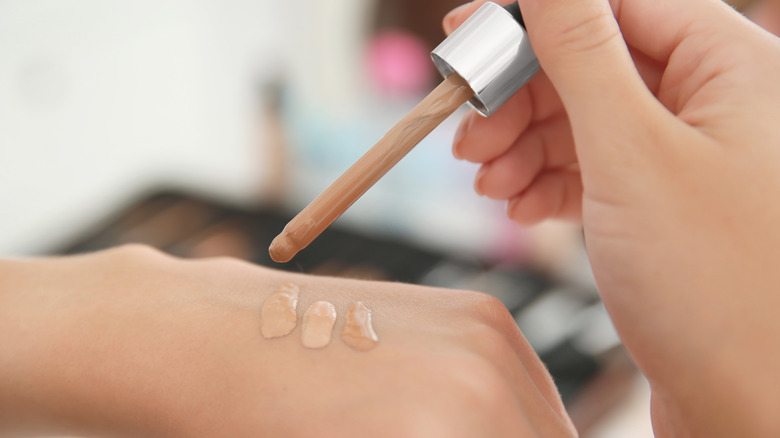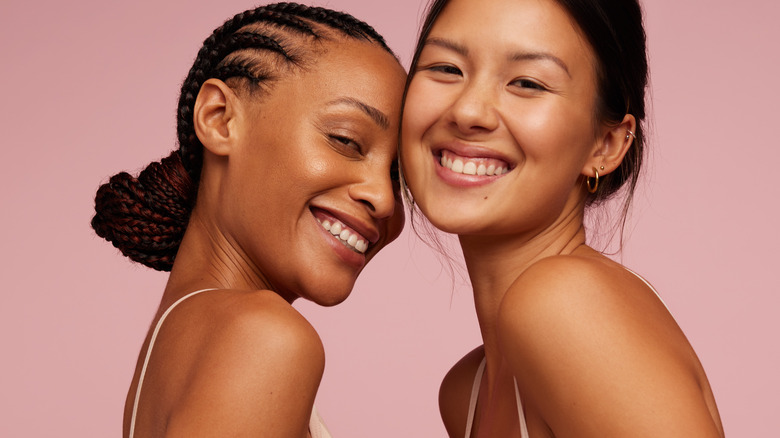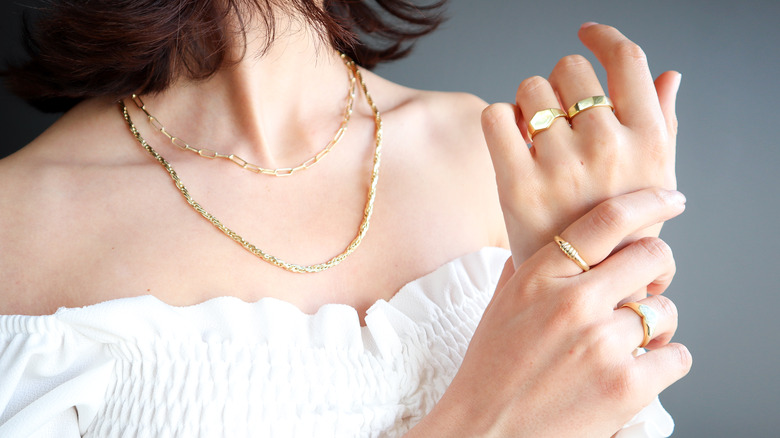Why Your Skin Undertones Matter And How To Figure It Out
We may receive a commission on purchases made from links.
So, you're trying to get your foundation shade right. You've got your list for your trip to Sephora and a loaded credit card. You probably know you're going to be in the medium range or maybe the deep range. But what you might not be considering is one teeny-tiny thing that has the power to have your makeup looking like skin, or have you looking gray and washed out: your undertone.
Undertones may sound similar to skin tones, but they are far from being the same. Unlike your skin tone which can change through the seasons, your undertone remains the same. Beauty Bakerie describes your skin undertone as the color underneath the surface of your skin that affects your overall hue. Now, you may be wondering, "Well, I'm already at Sephora. What's the big deal in choosing a foundation without considering my undertone?" Well, with complexion products like your foundation, your undertone is important because it helps you find your perfect shade. After all, you do not want lines of demarcation or hash lines, which occur when there's a visible difference between your foundation shade and the actual color of your neck, face, and ears (via Cheeky Rouge). Your undertone also helps you know what colors or shades suit you the best for your wardrobe and hairstyle (via Jergens).
Now that you know how important your undertone is in getting a perfect base, let's get into the kinds of undertones you might belong to.
What are the kinds of undertones?
There are three major kinds of undertones: warm, cool, and neutral. Warm undertones have hints of gold, peach, and yellow (via MasterClass). People with warm undertones might get darker with sun exposure but do not burn. Think Beyoncé or Jessica Alba. What's more, warm undertones do better with complexion products that have a slightly yellow base. For instance, the Nars Natural Radiant Longwear Foundation has a rating of 4.1 stars at Ulta and is perfect for warm undertones.
For cool undertones, the skin contains hints of pink and/or blue. Unlike its warm counterparts, skin with cool undertones find it easier to burn with sun exposure (via Beauty Blender). Think Adele or Lupita Nyong'o for better clarity on this undertone. Meanwhile, neutral undertones are the middle ground, being a mix of both warm and cool undertones. You could also be neutral if your undertone is about the same as your skin tone (via Healthline). Kerry Washington and Drew Barrymore are popular examples of this undertone. Keep in mind that undertones are not specific to certain skin tones. Fair skin can have warm undertones, and dark skin can have cool undertones. Still clueless? Here are a few ways to find where you fall.
How do I find my undertone?
To find your undertone, try going out in natural light, wearing a plain white t-shirt. Proven Skincare says you can also do this by holding some plain white paper against your skin. If your skin looks rosy or pinkish, you probably have cool undertones. If your skin looks yellowish and would look better in an off-white or cream-colored shirt, you have warm undertones. And if your skin looks good in both cream and plain white shirts, you are most likely neutral.
The kind of jewelry you wear is a good way of identifying your undertone. Take out a gold and silver piece of jewelry. If the gold looks better on you, you're probably in the warm category. If silver or platinum jewelry looks better, cool it is. And if both look great on you, consider neutral complexion products (via Maybelline). Also, take a good look at your veins in natural lighting. If your veins are green, your undertone is warm. Meanwhile, blue or purple veins equal cool undertones, and if you have a mix of both blue and green veins, or can not identify what color your veins are, you belong in the neutral category (via SkinKraft). Finding your undertones may be stressful, but with the benefits of a perfect foundation fit and the knowledge of what colors suit you, it's definitely worth trying to uncover.


